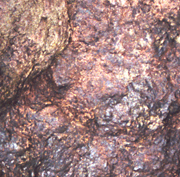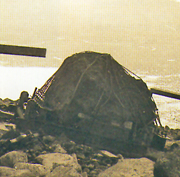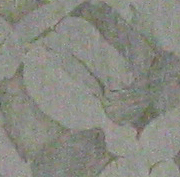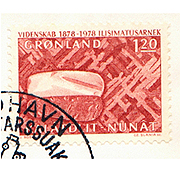Official Name:
This meteorite takes its name from a cape located 35 kilometres from where it was discovered. Agpalilik, Ahnighito, Baffin's Bay, and Melville are a few of its many other names. These terms, some of which are in the Inuit language, designate other nearby geographical features. The Inuit named the three biggest masses the Tent (Ahnighito), the Woman, and the Dog, probably because of their respective shapes and sizes.
Location:
In the northern part of Melville Bay, west of Greenland.
Fall or Find:
This meteorite is a find. It probably fell from the sky about 10 000 years ago, long before Greenland was inhabited.
Date:
The Inuit in the area knew about Cape York for several hundred years before it was discovered by an English explorer in 1818.
Mass Recovered:
About 58 metric tons of meteoritic matter have been recovered. If pieces of metal had not been removed from the main masses, the meteorite would be even bigger. The largest fragment of Cape York, which has a mass of 31 metric tons, is the third largest meteorite fragment after Hoba and Campo del Cielo.

Enlargement
The main mass, Ahnighito, displayed at the American Museum of Natural History, New York. This fragment measures 3.6 by 2.4 metres. |
|

Enlargement
Transporting the Agapalilik when it was discovered in 1963. |
|
Number of Fragments:
At least 9 fragments from the Cape York meteorite have been found so far.
Strewn field:
The fragments called the Dog and the Woman were found over 10 kilometres from the Tent, so the strewn field from this shower is quite large.
Crater:
The biggest fragments were lying on the flank of a mountain in loose gravel. The impact craters created during the fall probably disappeared over the thousands of years since the event.
Circumstances:
During an expedition to Greenland in 1818, John Ross met Inuit people who had iron knives in an area that was totally void of this metal. They said that they had taken the iron from a huge rock near Cape York. It was not until 1894 that the meteorite was located by an American expedition. Three heavily hammered masses were found: the Tent (31 metric tons), the Woman (3 metric tons), and the Dog (0.4 metric tons). Recovering the masses required colossal effort, which stretched out over 4 years and as many expeditions. The pieces were transported by ship to Brooklyn, New York. All three fragments are now housed at the American Museum of Natural History in New York.
A fourth mass was found in 1913. Savik I weighed 3.4 metric tons. In 1955, a geologist found a 48-kilogram fragment called Thule. In 1961, an Inuk discovered another fragment during a hunting expedition. This meteorite, called Savik II, is much smaller than Savik I: it only weighs 7.8 kilograms. In 1963, a 15-metric-ton mass called Agapalilik was found by scientist Vagn Buchwald. Using composition analysis, he realized that Cape York was also related to a fragment recovered near an ancient encampment on the Knud Peninsula in Canada. This 1.6-kilogram fragment, called Akpohon, was apparently transported more than 600 kilometres from the place where it fell. Other fragments have been uncovered during archaeological work. Finally, in 1984, a 250-kilogram fragment was discovered by Jeremias Petersen, an Inuk hunter.
History:
The Cape York meteorite was important in the daily life of the Inuit, who covered large distances to stock up on its iron. Meteoritic iron was used in particular to make arrowheads, harpoons, and knives. Between the Ross expedition that revealed to the world the existence of iron meteorites near Cape York and their discovery by Peary, numerous other American and European explorers tried their chance. The Inuit always refused to divulge the whereabouts of the meteorites. Peary finally convinced them by offering them guns and other objects made of iron.

Enlargement
Widmanstätten figures inside the Cape York octahedrite. |
|

Enlargement
This stamp, commemorating the discovery of the Cape York meteorite, was issued by Greenland on January 20, 1978. On the left of the envelope can be seen the Agapalilik mass. |
|
Type:
Iron meteorite
Class:
Medium octahedrite. The bands in the Widmanstätten figures are 1.2 millimetres wide.
Group:
IIIAB
Composition:
The outside of this dark brown meteorite is covered with greenish inclusions. Cape York contains over 91% iron. The proportion of nickel varies from 7.3 to 7.9% in the different parts of the meteorite. Cape York's troilite nodules are all oriented in the same direction, showing the influence of gravity during their solidification.
Scientific contribution:
The Cape York meteoroid was exposed to cosmic rays for about 93 million years. This means that it is much younger than most IIIAB octahedrites, which are about 650 million years old. The difference in age may indicate that Cape York is the result of a recent collision and fragmentation of the parent body.
Comments:
Ahnighito, or the Tent, is the largest meteorite in a museum collection.
Part of the Planétarium's collection:
Yes